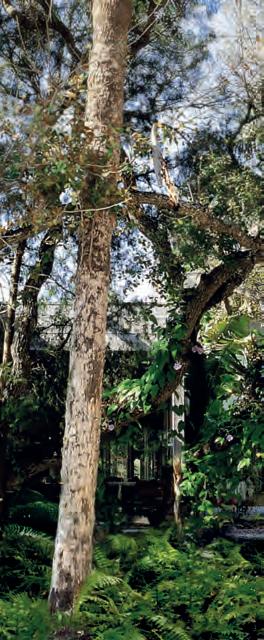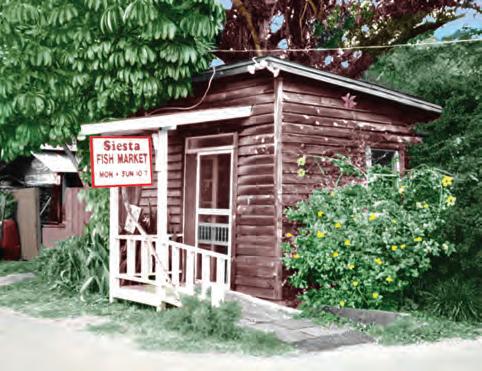
3 minute read
That Other Ritz-Carlton
John Ringling had many success stories as a developer. The Ritz-Carlton on Longboat Key wasn’t one of them. At the dawn of the Jazz Age, Ringling had envisioned an opulent, 200-room resort hotel for the rich and famous. Work began in the mid-1920s at the fever-pitch height of the Florida land boom. Work stopped when that speculative fever broke. The boom went bust, and Ringling was hemorrhaging money. He sent all his workers home when the grand hotel was only half-done. What they’d managed to build was an empty shell — crowned by the spidery steel framework of an unfinished cupola. Ringling vowed to finish the job, but thanks to the Great Depression, he never did. He couldn’t afford to complete his grand hotel or even tear it down. After Ringling’s death, the Ritz’ skeletal structure remained a magnificent ruin for decades. The Arvida Corp. finally bought it — and got rid of it in 1964. The Longboat Key Club now stands on the site of Ringling’s demolished dream.


Siesta Key
The Summerhouse Restaurant was a glorious glass house set in a tropical garden. Architect Carl Abbott’s structure blurred the boundary between nature and humanity with floor-toceiling glass. Those transparent walls revealed a jungle worthy of a Rousseau painting — a subtropical Eden of gold trees, jacarandas, magnolias, oaks and palms. On this project, Abbott was both the architect and the landscape architect. He echoed nature’s living forms with the restaurant’s organic form. Abbott’s 1975 design had a geometric logic, but it wasn’t predictable. Despite its glass skin, the Summerhouse didn’t seem like a lifeless, crystalline entity. It was more like a life form that had taken root and grown on the site. As with every living thing, its shape seemed both inevitable and surprising. A floating stairway led to the Tree Top Lounge on the balcony — and a bird’s-eye view of palm fronds reaching for the sky. Like leaves on a tree, the building’s wings flowed from the same pattern without exactly repeating it. Great architecture aside, the Summerhouse became the go-to spot for swanky nights out and al fresco brunches in the gardens. In 2007, the developers of the Summer Cove condominiums bought both site and structure. Instead of tearing it down, the new owners turned the former restaurant into a private clubhouse. They still work hard to create community access and honor Abbott’s architectural legacy. His masterpiece isn’t a restaurant anymore. But I’m glad it’s still here.

The Siesta Key Fish Market didn’t try to be pretty. It was, in its essence, a rickety shack that Lonnie Blount opened as a fish market in 1932. There used to be thousands of fish markets just like it on Florida’s islands and shorelines. This one was a bustling gathering spot where folks from all backgrounds came to buy flopping fresh fish and share fish tales. (Legend has it that Eleanor Roosevelt was one of its customers.) Blunt sold it in the ’50s, and it continued to thrive under the new owners. By the time Guy Asbury purchased it in 1993, the times were changing. Price tags for waterfront homes shot through the stratosphere on the key — and, eventually, the city changed the zoning to residential only. SKFM was nestled on a secluded bayou at the north of Siesta Key — a sweet spot for developers, who built a new neighborhood in the blink of an eye. By the mid-1990s, Asbury’s little shop of fishes was surrounded by upscale residences. True to form, his new neighbors didn’t want to live next to a fish market, despite its landmark status. When their barrage of complaints didn’t kill SKFM, they shifted to legal attacks and bombarded the market with constant injunctions, court orders, and citations for code and noise violations. For Asbury, it was the death of a thousand cuts. He didn’t give in. But his operating license had been grandfathered in. In 1999, the city of Sarasota refused to renew it — and that’s how this story ends.
Pianist Awadagin Pratt
Wed. Feb 15, 2023, 7:30 pm
Riverview Performing Arts Center

Acclaimed for his musical insight and intensely involved performances, Awadagin Pratt performs a varied program of works from Philip Glass to Rachmaninoff and Liszt.

Chicago
Riccardo Muti, Music Director
Wed. March 1, 2023, 7:30 pm
Van Wezel Performing Arts Hall

In his final season as Music Director, Riccardo Muti leads the internationally acclaimed Chicago Symphony in Beethoven’s Symphony No. 8 and Mussorgsky’s Pictures from an Exhibition.

Continued from Page 85










